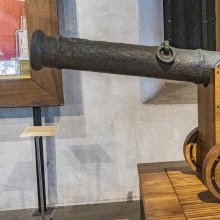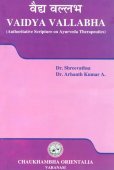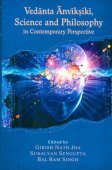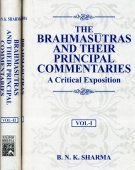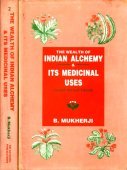Mishra, Miśra: 28 definitions
Introduction:
Mishra means something in Buddhism, Pali, Hinduism, Sanskrit, Jainism, Prakrit, the history of ancient India, Marathi, Hindi. If you want to know the exact meaning, history, etymology or English translation of this term then check out the descriptions on this page. Add your comment or reference to a book if you want to contribute to this summary article.
The Sanskrit term Miśra can be transliterated into English as Misra or Mishra, using the IAST transliteration scheme (?).
Images (photo gallery)
In Hinduism
Ayurveda (science of life)
Rasashastra (Alchemy and Herbo-Mineral preparations)
Source: Wisdom Library: Rasa-śāstraMiśra (मिश्र) is a variation of Tin (Vaṅga), according to the Rasaprakāśasudhākara: a 13th century Sanskrit book on Indian alchemy, or, Rasaśāstra. It is considered inferior over the other variation (khura) and not recommended for medicinal use. Tin itself is a metal (dhātu/loha) from the sub-group named Pūtiloha.

Āyurveda (आयुर्वेद, ayurveda) is a branch of Indian science dealing with medicine, herbalism, taxology, anatomy, surgery, alchemy and related topics. Traditional practice of Āyurveda in ancient India dates back to at least the first millenium BC. Literature is commonly written in Sanskrit using various poetic metres.
Natyashastra (theatrics and dramaturgy)
Source: Wisdom Library: Nāṭya-śāstraMiśra (मिश्र) refers to one of the varieties of the catuṣpadā type of song, according to the Nāṭyaśāstra chapter 31. Accordingly, “when in a song, the khañja and the natkuṭa have been mixed up, and it is sung in the tryasra or the caturasra tāla, it is called miśra (the mixed one)”.

Natyashastra (नाट्यशास्त्र, nāṭyaśāstra) refers to both the ancient Indian tradition (shastra) of performing arts, (natya—theatrics, drama, dance, music), as well as the name of a Sanskrit work dealing with these subjects. It also teaches the rules for composing Dramatic plays (nataka), construction and performance of Theater, and Poetic works (kavya).
Vyakarana (Sanskrit grammar)
Source: Wikisource: A dictionary of Sanskrit grammarMiśra (मिश्र).—Roots taking personal endings of both the Padas; Ubhayapadin roots; this term मिश्र (miśra) is given in Bopadeva's grammar.

Vyakarana (व्याकरण, vyākaraṇa) refers to Sanskrit grammar and represents one of the six additional sciences (vedanga) to be studied along with the Vedas. Vyakarana concerns itself with the rules of Sanskrit grammar and linguistic analysis in order to establish the correct context of words and sentences.
Shaivism (Shaiva philosophy)
Source: Shodhganga: Temple management in the ĀgamasMiśra (मिश्र) or Miśrapūjā refers to a classification of pūjā (ritualistic worship) according to the Ajitāgama (20.19).—The Āgamas have several different classifications of nityapūjā (daily worship), based on the number of offerings, frequency, time duration and so on. The nomenclature also varies between Āgamas. The essence however is similar. Ajitāgama has a different nomenclature and classifies pūjā into śuddha, miśra and saṅkīrṇa. That which ends with havis or naivedya is termed śuddha. That which ends with nityotsava is termed miśra. That which ends with śuddhanṛtta is termed saṅkīrṇa.
Source: Sri Kamakoti Mandali: The Sects of śaivasMiśra (मिश्र) or Miśraśaiva refers to one of the four types of Śaivas based on ācāra, according to the Kriyāpāda of Candrajñāna (Candrajñānāgama).—A Miśraśaiva offers equal worship to śiva, Viṣṇu, Brahmā, Kumāra, Gaṇeśa, Āditya and Ambikā. While exhibiting devatābuddhi towards all these, he still holds a special place for śiva, though performing the rituals for all the deities listed. Since the śaiva aspects here are mixed with the sampradāya of other deities such as Viṣṇu, Gaṇeśa, and Śakti, this ācāra is known as Miśraśaiva.

Shaiva (शैव, śaiva) or Shaivism (śaivism) represents a tradition of Hinduism worshiping Shiva as the supreme being. Closely related to Shaktism, Shaiva literature includes a range of scriptures, including Tantras, while the root of this tradition may be traced back to the ancient Vedas.
Vaishnavism (Vaishava dharma)
Source: Pure Bhakti: Arcana-dipika - 3rd EditionMiśra (मिश्र, “mixed”) refers to one of the three classifications of Arcana (“deity worship”), according to the Arcana-dīpikā (manual on deity worship).—By performing arcana of Bhagavān, one soon feels an immense pleasure within oneself, which is the cause of all varieties of perfections, or auspicious desires. Without performing arcana, it is not possible for a person attached to material enjoyment to break free from bad association and so forth.

Vaishnava (वैष्णव, vaiṣṇava) or vaishnavism (vaiṣṇavism) represents a tradition of Hinduism worshipping Vishnu as the supreme Lord. Similar to the Shaktism and Shaivism traditions, Vaishnavism also developed as an individual movement, famous for its exposition of the dashavatara (‘ten avatars of Vishnu’).
Vastushastra (architecture)
Source: OpenEdition books: Architectural terms contained in Ajitāgama and RauravāgamaMiśra (मिश्र) refers to “mixed (qualifies a construction made with several materials used simultaneously) §§ 2.9; 5.3.”.—(For paragraphs cf. Les enseignements architecturaux de l'Ajitāgama et du Rauravāgama by Bruno Dagens)

Vastushastra (वास्तुशास्त्र, vāstuśāstra) refers to the ancient Indian science (shastra) of architecture (vastu), dealing with topics such architecture, sculpture, town-building, fort building and various other constructions. Vastu also deals with the philosophy of the architectural relation with the cosmic universe.
Jyotisha (astronomy and astrology)
Source: Wisdom Library: Brihat Samhita by Varahamihira1) Miśra (मिश्र) (or Miśragati, Vimiśra) refers to one of the seven “courses of Mercury” (Budhacāra), according to the Bṛhatsaṃhitā (chapter 7), an encyclopedic Sanskrit work written by Varāhamihira mainly focusing on the science of ancient Indian astronomy astronomy (Jyotiṣa).—Accordingly, “If [Mercury—Budha] should pass through the constellations of Mṛgaśīrṣa, Ārdrā, Maghā, Aśleṣā, sacred respectively to the Moon, to Siva, to the Pitṛs and to the serpent, his course is known as Miśragati [i.e., Vimiśra]. [...] When Mercury is in his Prākṛta course, there will be increase of health, of rain, of crops and there will be prosperity in the land. If he should be either in his Saṃkṣipta or Miśra course, mankind will be partly happy and partly miserable. When in his remaining four courses, Mercury brings on adversity”.
2) Miśra (मिश्र) refers to “elephants”, according to the Bṛhatsaṃhitā (chapter 12).—Accordingly, “Hear now the effects of the heliacal rising of Canopus (Agastya), a star sacred to Agastya who suppressed the Vindhya mountains whose soaring heights obstructed the course of the Sun; to which the pictured robes of the Vidyādhara females leaning for support on their lord’s arms and flying aloft in the sky formed beautiful flowing flags; whose caves were the abodes of lions which, having drunk of the perfumed blood of elephants in rut [i.e., mada-miśra-raktāvaleha-anuvāsa] had their mouths covered with bees that looked like so many black flowers, and from which caves issued rivers; [...]”.

Jyotisha (ज्योतिष, jyotiṣa or jyotish) refers to ‘astronomy’ or “Vedic astrology” and represents the fifth of the six Vedangas (additional sciences to be studied along with the Vedas). Jyotisha concerns itself with the study and prediction of the movements of celestial bodies, in order to calculate the auspicious time for rituals and ceremonies.
Shilpashastra (iconography)
Source: Shodhganga: Elements of Art and Architecture in the Trtiyakhanda of the Visnudharmottarapurana (shilpa)Miśra (मिश्र) refers to one of the four division of Citra (“painting”), according to the Viṣṇudharmottarapurāṇa, an ancient Sanskrit text which (being encyclopedic in nature) deals with a variety of cultural topics such as arts, architecture, music, grammar and astronomy.—The fourth variety is called miśra and this variety of Painting is the mixture of the above mentioned three varieties of Painting viz., satya, vaiṇika and nāgara.

Shilpashastra (शिल्पशास्त्र, śilpaśāstra) represents the ancient Indian science (shastra) of creative arts (shilpa) such as sculpture, iconography and painting. Closely related to Vastushastra (architecture), they often share the same literature.
Sports, Arts and Entertainment (wordly enjoyments)
Source: archive.org: Syainika Sastra of Rudradeva with English Translation (art)Miśra (मिश्र) refers to “mixing ingredients (with cow butter)” (in the treatment of hawks), according to the Śyainika-śāstra: a Sanskrit treatise dealing with the divisions and benefits of Hunting and Hawking, written by Rājā Rudradeva (or Candradeva) in possibly the 13th century.—Accordingly, [while discussing the treatment of hawks]: “[...] If the disease is caused by a general wasting of the system, [...] the proper thing to do is [...] to administer the fresh meat of a hen sparrow; or, the flesh of hogs may also be given in small quantities according to the strength of the bird; or, the flesh of birds mixed (miśra) with cow-butter. Warm-water is to be given with discretion, and, after that, water mixed with camphor, from time to time”.

This section covers the skills and profiencies of the Kalas (“performing arts”) and Shastras (“sciences”) involving ancient Indian traditions of sports, games, arts, entertainment, love-making and other means of wordly enjoyments. Traditionally these topics were dealt with in Sanskrit treatises explaing the philosophy and the justification of enjoying the pleasures of the senses.
In Buddhism
Mahayana (major branch of Buddhism)
Source: Wisdom Library: Maha Prajnaparamita SastraMiśra (मिश्र) or Miśravana is the name of one of the four parks of the Sudarśana city according to appendix 8 of the 2nd century Mahāprajñāpāramitāśāstra (chapter XIV).—The Trāyastriṃśa gods with Śakra as king live in the city of Sudarśana on the summit of Mount Meru. This city has four parks (viz., Miśra).
Source: De Gruyter: A Buddhist Ritual Manual on AgricultureMiśra (मिश्र) refers to the “mixing of ingredients” (suitable for an offering ritual), according to the Vajratuṇḍasamayakalparāja, an ancient Buddhist ritual manual on agriculture from the 5th-century (or earlier), containing various instructions for the Sangha to provide agriculture-related services to laypeople including rain-making, weather control and crop protection.—Accordingly, [As the Bhagavān said]: “Now I shall teach the offering manual which is auspicious and can bring about any effect. [...] Four ladles with frankincense should be placed [in the four directions] and a fifth in the middle of the maṇḍala. Mixed (miśra) parched grain and mustard seeds should be enchanted twenty-one times and thrown in the four directions. [...]”.

Mahayana (महायान, mahāyāna) is a major branch of Buddhism focusing on the path of a Bodhisattva (spiritual aspirants/ enlightened beings). Extant literature is vast and primarely composed in the Sanskrit language. There are many sūtras of which some of the earliest are the various Prajñāpāramitā sūtras.
Tibetan Buddhism (Vajrayana or tantric Buddhism)
Source: Brill: Śaivism and the Tantric Traditions (tantric Buddhism)Miśra (मिश्र) refers to “mixing (juices)”, according to the Bhūśalyasūtrapātananimittavidhi section of Jagaddarpaṇa’s Ācāryakriyāsamuccaya, a text within Tantric Buddhism dealing with construction manual for monasteries etc.—Accordingly, “[...] Having praised [the cord] with the sounds of a bell, auspicious song, conch shell, and bamboo flute, the donor should offer guest water [to the cord] together with jewels, gold, and fragrant flowers, which are blooming and beautiful, and mixed with the juice (payas-miśra) extracted from the sprouts of the airandhrīkara”.

Tibetan Buddhism includes schools such as Nyingma, Kadampa, Kagyu and Gelug. Their primary canon of literature is divided in two broad categories: The Kangyur, which consists of Buddha’s words, and the Tengyur, which includes commentaries from various sources. Esotericism and tantra techniques (vajrayāna) are collected indepently.
In Jainism
General definition (in Jainism)
Source: Encyclopedia of Jainism: Tattvartha Sutra 2: the Category of the living1) Miśra (मिश्र, “mixed”) or kṣāyopaśamika refers to “destruction-cum-subsidence of karmas” and represents one of the five dispositions (thought-activities) of the soul, according to the 2nd-century Tattvārthasūtra 2.1. What is meant by mixed-disposition (miśra)? The subsidence-cum-destruction disposition is called mixed disposition.
2) Miśra (मिश्र, “mixed”) refers “living and non living being” to a category of yoni (nuclei), according to the 2nd-century Tattvārthasūtra 2.32.—The place of birth of a living being is called nucleus (nuclei is the plural). The nucleus is like a container. There are nine nuclei (yoni), eg., miśra. What is the meaning of mixed nucleus? The nucleus, which is a mix of partly cold and partly hot; or partly living and partly non living or partly covered and partly exposed, is called mixed nucleus.
What types of living beings have cold (śīta), hot (uṣṇa) and mixed (miśra) hot and cold nuclei? Some have cold, hot or mixed nuclei. The celestial and infernal beings have cold or hot and cold-hot nuclei. Those with hot body (fire body) take their rise from hot nuclei. Those who possess their body of heat have hot nuclei. All others, besides celestial, infernal and fire body have mixed or cold-hot nuclei.

Jainism is an Indian religion of Dharma whose doctrine revolves around harmlessness (ahimsa) towards every living being. The two major branches (Digambara and Svetambara) of Jainism stimulate self-control (or, shramana, ‘self-reliance’) and spiritual development through a path of peace for the soul to progess to the ultimate goal.
India history and geography
Source: Cologne Digital Sanskrit Dictionaries: Indian Epigraphical GlossaryMiśra.—(IA 18), an honorific title; cf. Mahāmiśrapaṇdita. Note: miśra is defined in the “Indian epigraphical glossary” as it can be found on ancient inscriptions commonly written in Sanskrit, Prakrit or Dravidian languages.

The history of India traces the identification of countries, villages, towns and other regions of India, as well as mythology, zoology, royal dynasties, rulers, tribes, local festivities and traditions and regional languages. Ancient India enjoyed religious freedom and encourages the path of Dharma, a concept common to Buddhism, Hinduism, and Jainism.
Languages of India and abroad
Marathi-English dictionary
Source: DDSA: The Molesworth Marathi and English Dictionarymiśra (मिश्र).—m (S) The name of a country and of a tribe of Brahmans belonging to it.
--- OR ---
miśra (मिश्र) [or मिश्रित, miśrita].—p (S) Mixed, mingled, blended. 2 In arithmetic. Added.
Source: DDSA: The Aryabhusan school dictionary, Marathi-Englishmiśra (मिश्र).—p Mixed. Added.
Marathi is an Indo-European language having over 70 million native speakers people in (predominantly) Maharashtra India. Marathi, like many other Indo-Aryan languages, evolved from early forms of Prakrit, which itself is a subset of Sanskrit, one of the most ancient languages of the world.
Sanskrit dictionary
Source: DDSA: The practical Sanskrit-English dictionaryMiśra (मिश्र).—a. [miśr-ac]
1) Mixed, blended, mingled, combined; गद्यं पद्यं च मिश्रं च तत् त्रिधैव व्यवस्थितम् (gadyaṃ padyaṃ ca miśraṃ ca tat tridhaiva vyavasthitam) Kāv.1.11, 31,32; R.16.32; (sa rājā) अहन्यहन्यर्थगजाश्वमिश्रैर्वृद्धिं ययौ सिन्धुरिवाम्बुवेगैः (ahanyahanyarthagajāśvamiśrairvṛddhiṃ yayau sindhurivāmbuvegaiḥ) Bu. Ch.2.1.
2) Associated, connected.
3) Manifold, diverse; प्रसूतिमिश्राः स्रिय उद्विग्नचित्ता ऊचुर्विपाको वृजिनस्यैष तस्य (prasūtimiśrāḥ sriya udvignacittā ūcurvipāko vṛjinasyaiṣa tasya) Bhāgavata 4.5.9.
4) Tangled, intertwined.
5) (At the end of comp.) Having a mixture of, consisting for the most part of.
6) Mixing, adulterating.
-śraḥ 1 A respectable or worthy person; usually affixed to the names of great men and scholars; आर्यमिश्राः प्रमाणम् (āryamiśrāḥ pramāṇam) M.1; वसिष्ठमिश्रः (vasiṣṭhamiśraḥ); मण्डनमिश्रः (maṇḍanamiśraḥ) &c.
2) A kind of elephant.
3) The group of the constellations कृत्तिका (kṛttikā) and विशाखा (viśākhā).
4) (In music) A kind of measure.
-śram 1 A mixture.
2) A kind of radish.
3) (with dhana) Principal and interest.
Source: Cologne Digital Sanskrit Dictionaries: Shabda-Sagara Sanskrit-English DictionaryMiśra (मिश्र).—mfn.
(-śraḥ-śrā-śraṃ) Mixed, mingled, blended. n.
(-śraṃ) Mixing, mixture. m.
(-śraḥ) 1. An elephant, the fourth of the four classes in which elephants are arranged. 2. A respectable person; in which sense it is a common affix to proper names; or compounded with ārya, as āryamiśrāḥ &c. E. miśr to mix, aff. ac .
Source: Cologne Digital Sanskrit Dictionaries: Benfey Sanskrit-English DictionaryMiśra (मिश्र).—i. e. miś (perhaps for mikṣ, desider. of mih, without red., cf. mih with sam), + ra, I. adj. Mixed, Böhtl. Ind. Spr. 187; [Pañcatantra] 9, 4; [Uttara Rāmacarita, 2. ed. Calc., 1862.] 42, 11. Ii. n. Mixing. Iii. m. 1. An elephant. 2. A respectable person, Sir, [Lassen, Anthologia Sanskritica.] 95, 9; in this sense it is a common affix to nouns, [Vikramorvaśī, (ed. Bollensen.)] 3, 12, and proper names, [Lassen, Anthologia Sanskritica.] 89, 6.
Source: Cologne Digital Sanskrit Dictionaries: Aufrecht Catalogus Catalogorum1) Miśra (मिश्र) as mentioned in Aufrecht’s Catalogus Catalogorum:—See Maṇḍanamiśra, Mitramiśra
2) Miśra (मिश्र):—Kusumāñjaliṭīkā. Śabdāloka. Quoted by Jayarāma Hall. p. 59.
3) Miśra (मिश्र):—Pāṇinīyoṇādisūtrodghāṭana.
4) Miśra (मिश्र):—(?): Mugdhabodhaṭīkā Chaṭā.
Source: Cologne Digital Sanskrit Dictionaries: Monier-Williams Sanskrit-English Dictionary1) Miśra (मिश्र):—[from miśr] mf(ā)n. ([probably] [from] a lost √miś cf. under mikṣ) mixed, mingled, blended, combined, [Ṛg-veda] etc. etc. (vacāṃsi miśrā √1. kṛ, [Apte’s The Practical Sanskrit-English Dictionary] -kṛṇute, to mingle words, talk together, [Ṛg-veda x, 93, 1])
2) [v.s. ...] manifold, diverse, various, [Taittirīya-saṃhitā] etc. etc.
3) [v.s. ...] mixed or connected or furnished with, accompanied by ([instrumental case] with or without samam [genitive case] or [compound]; rarely miśra [in the beginning of a compound] cf. miśra-vāta), [Vājasaneyi-saṃhitā] etc. etc.
4) [v.s. ...] [plural] (ifc. after honorific epithets = etc.; e.g. ārya-miśrāḥ, respectable or honourable people etc.; often also in sg. ifc. and rarely [in the beginning of a compound] with proper names by way of respect cf. kṛṣṇa-, madhu-m and [compound] below)
5) [v.s. ...] mixing, adulterating: (cf. dhānyam)
6) [v.s. ...] m. a kind of elephant, [cf. Lexicographers, esp. such as amarasiṃha, halāyudha, hemacandra, etc.]
7) [v.s. ...] (in music) a kind of measure, [Saṃgīta-sārasaṃgraha]
8) [v.s. ...] Name of various authors and other men (also abbreviation for some names ending in miśra e.g. for Madana-, Mitra-, Vācaspati- m°), [Catalogue(s)]
9) [v.s. ...] n. principal and interest, [Lalita-vistara] (cf. -dhana)
10) [v.s. ...] a species of radish, [cf. Lexicographers, esp. such as amarasiṃha, halāyudha, hemacandra, etc.]
Source: Cologne Digital Sanskrit Dictionaries: Yates Sanskrit-English Dictionary1) Miśra (मिश्र):—(ka) miśrayati 10. a. To mix, blend.
2) [(śraḥ-śrā-śraṃ) a.] Mixed, blended. m. An elephant; a respectable person. n. Mixing, a mixture.
Source: DDSA: Paia-sadda-mahannavo; a comprehensive Prakrit Hindi dictionary (S)Miśra (मिश्र) in the Sanskrit language is related to the Prakrit words: Missa, Mīsa, Mīsālia, Melava, Vīsāla.
[Sanskrit to German]
Sanskrit, also spelled संस्कृतम् (saṃskṛtam), is an ancient language of India commonly seen as the grandmother of the Indo-European language family (even English!). Closely allied with Prakrit and Pali, Sanskrit is more exhaustive in both grammar and terms and has the most extensive collection of literature in the world, greatly surpassing its sister-languages Greek and Latin.
Hindi dictionary
Source: DDSA: A practical Hindi-English dictionary1) Miśra (मिश्र) [Also spelled misra]:—(a) mixed; complex; blended, combined; —[vākya] a complex sentence.
2) Misra in Hindi refers in English to:—(a) mixed; complex; blended, combined; —[vakya] a complex sentence..—misra (मिश्र) is alternatively transliterated as Miśra.
3) Misra in Hindi refers in English to:—(nm) one-half of a couplet..—misra (मिसरा) is alternatively transliterated as Misarā.
...
Kannada-English dictionary
Source: Alar: Kannada-English corpusMiśra (ಮಿಶ್ರ):—
1) [adjective] mixed; mingled; blended; combined.
2) [adjective] of different kinds; varied; various.
3) [adjective] manifold; diverse.
--- OR ---
Miśra (ಮಿಶ್ರ):—
1) [noun] something made by mixing of different ingredients; a mixture.
2) [noun] a respectable term used in addressing honourable people.
3) [noun] a species of radilsh.
4) [noun] (mus.) a cycle of seven units.
5) [noun] one of the four types of human voices (in singing).
6) [noun] (math.) an adding of two or more numbers to get the sum; addition.
--- OR ---
Misra (ಮಿಸ್ರ):—
1) [noun] name of a country in North East Africa with Cairo as its capital; Egypt.
2) [noun] an inhabitant of that country.
Kannada is a Dravidian language (as opposed to the Indo-European language family) mainly spoken in the southwestern region of India.
See also (Relevant definitions)
Starts with (+52): Mishra agnihotrin, Mishra Apurnanka, Mishra balakrishna, Mishra dhodhra, Mishra hitalala sharman, Mishra jagannatha, Mishra latakana, Mishra rucinatha, Mishra sananda, Mishra somayajin, Mishra-dhatu, Mishra-vakya, Mishraapurnika, Mishrabhana, Mishrabhava, Mishracarya prithividhara, Mishracaturbhuja, Mishracaura, Mishrachaura, Mishrachora.
Ends with (+293): Abhyushtamishra, Acala mishra, Acaryamishra, Acaryyamishra, Acharyamishra, Acharyyamishra, Aharakamishra, Amishra, Amritanatha mishra, Ananta mishra, Andhatamisra, Aniruddha mishra, Arjunamishra, Aryamishra, Aryavidagdhamishra, Aryyamishra, Asajjatimishra, Ashamishra, Asrinmishra, Audarikamishra.
Full-text (+823): Vacaspati-mishra, Aryamishra, Vyamishra, Melava, Dhimarana, Missa, Mishradhanya, Mishravyavahara, Mishraka, Bhamati, Bhavanatha, Bhavamishra, Gudamishra, Mishrabhava, Ramakumara, Manikyamishra, Madanamishra, Dhireshamishra, Kukkutamishra, Bhattabhaskara.
Relevant text
Search found 141 books and stories containing Mishra, Miśra, Misra; (plurals include: Mishras, Miśras, Misras). You can also click to the full overview containing English textual excerpts. Below are direct links for the most relevant articles:
Shrimad Bhagavad-gita (by Narayana Gosvami)
Verse 18.12 < [Chapter 18 - Mokṣa-yoga (the Yoga of Liberation)]
Verse 13.1 < [Chapter 13 - Prakṛti-puruṣa-vibhāga-yoga]
Verse 2.54 < [Chapter 2 - Sāṅkhya-yoga (Yoga through distinguishing the Soul from the Body)]
Chaitanya Bhagavata (by Bhumipati Dāsa)
Verse 2.6.172 < [Chapter 6 - The Lord’s Meeting with Advaita Ācārya]
Verse 1.10.44 < [Chapter 10 - Marriage with Śrī Lakṣmīpriyā]
Verse 1.13.6 < [Chapter 13 - Defeating Digvijayī]
Kavyamimamsa of Rajasekhara (Study) (by Debabrata Barai)
Part 2 - Genisis of Kāvyapuruṣa (kāvyapuruṣotpatti) < [Chapter 3 - Contribution of Rājaśekhara to Sanskrit Poetics]
Part 23 - The story of kāvya-puruṣa by Rājaśekhara < [Chapter 2 - A General Outlines of Sanskrit Poetics]
Part 2.1 - Genesis of Kāvya-puruṣa and metrical composition < [Chapter 5 - Analyasis and Interpretations of the Kāvyamīmāṃsā]
Vaisheshika-sutra with Commentary (by Nandalal Sinha)
Sūtra 6.2.5 (What objects are pure or holy) < [Chapter 2 - Of the Production of Dharma and A-dharma]
Sūtra 1.1.9 (Resemblance of Substance and Attribute) < [Chapter 1 - Of Substance, Attribute, and Action]
Sūtra 6.1.7 (Impure explained) < [Chapter 1 - Of Vedic Duties]
Hanuman Nataka (critical study) (by Nurima Yeasmin)
1. Influence of Śrī Dāmodara Miśra on other Poets < [Chapter 6]
2. Influence of other Poets upon Śrī Dāmodara Miśra < [Chapter 6]
Garga Samhita (English) (by Danavir Goswami)
Verse 1.16.6 < [Chapter 16 - Description of Śrī Rādhikā’s Wedding]
Verse 6.18.16 < [Chapter 18 - In the Course of Describing the Glories of Siddhāśrama, a Description of the Rāsa-dance Festival]
Related products


